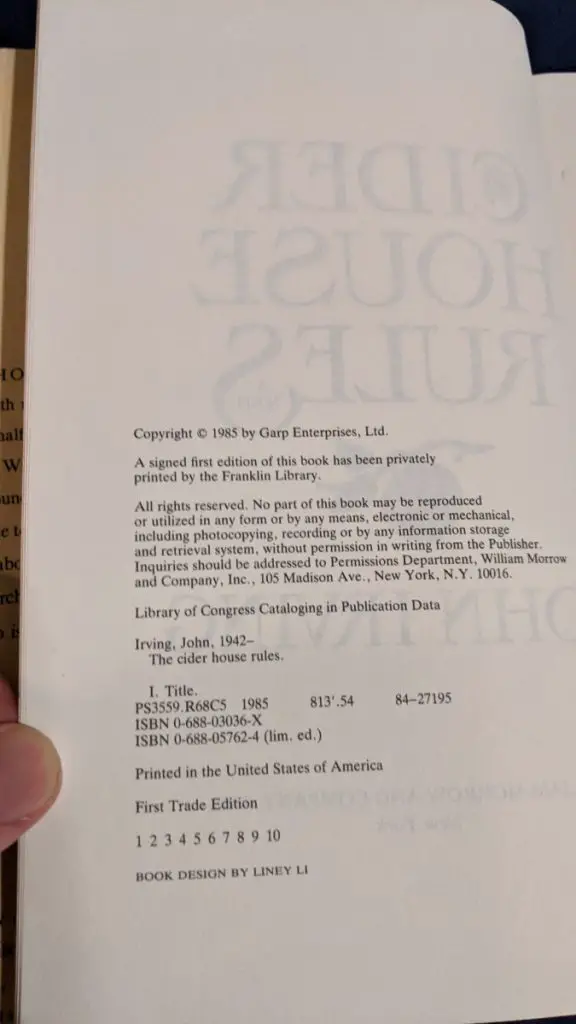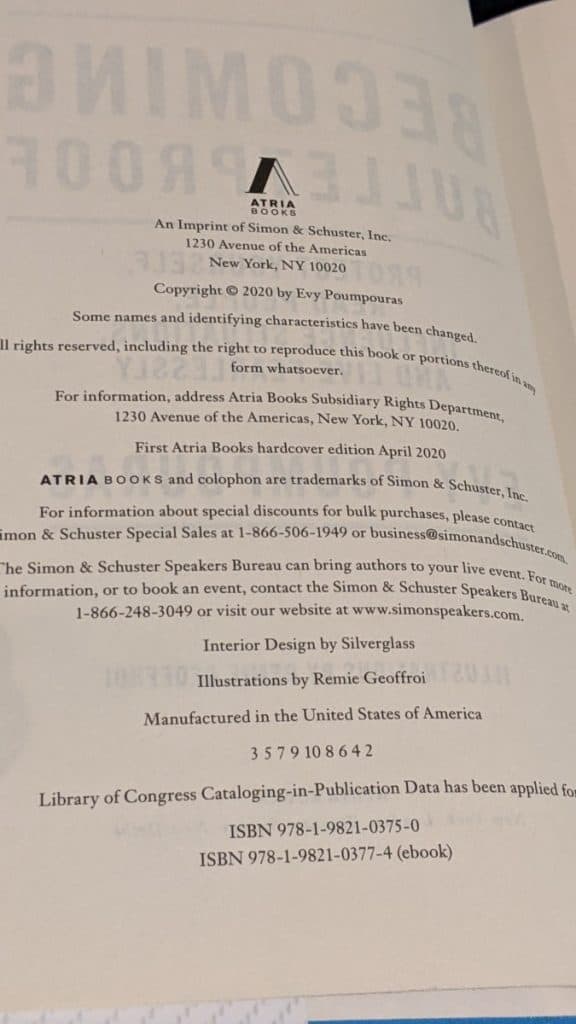If you’re going to make money buying and selling first edition books, or “book flipping” collectible books, then you’d better learn the difference between a first edition and a first printing!
While this might not be a big deal for readers, it’s absolutely huge for book collectors, book hounds, and antique book sellers.
A first printing is the first run of when a first edition of a book is published. While second and third printings are technically first editions as long as edits aren’t made, the first printing is considered the collectible first edition that collectors are looking for.
Learning how to tell if a first edition is a first printing is crucial to making more as a successful book hound whether you’re doing it as a side hustle or are obsessed enough to make it a full time job.

Why Is a First Printing Different from a First Edition?
The first thing to understand is that a first printing is always going to be a first edition of the book, but the opposite isn’t true. A first edition might not necessarily be a first printing.
Fiction books tend to be printed in “runs.” For an unproven author, a first run of 10,000 books means that’s the number made and shipped across the country, and no more are printed until the sales numbers come in.
If the book is popular, gets a lot of attention, or otherwise a high demand occurs so more orders come in, then a second run of books will be made. In this case the books in that second run are still first editions of the book because no changes or edits were made. But they weren’t with the first batch, so they would not be a first printing.
Only the books that were created on the first run will be a first printing. These are the books that collectors are looking for.
All first printings are first editions. Not all first editions are going to be first printings.
Now there are some rare situations where a second or third printing or a “first trade edition” are still going to be valuable for certain books. That being said, the first edition/first printing is what book hunters (aka book hounds) are always looking for.
Often to save time when two book hunters are talking they just say “first edition” knowing they are talking about first printings when using that term, unless specifically otherwise noted.
How Can You Tell if a First Edition Is a First Printing?
There are a few general ways that will help you decide if 99.9% of the books out there are a first printing or not. Keep in mind there are some exceptions, but generally the information here is everything you need to know.
Look for the Numbers
The biggest tell tale giveaway are the numbers on an inside page. If you look at the picture above there’s a row of numbers from 1 to 10 (sometimes depending on the publisher these might go from 10 to 1). When you see a full consecutive row of numbers that includes the 1 then you are looking at a first printing.
On the other hand, you may see an inside page that looks like this:

Notice something different with the numbers in this one? Any time there are number patterns versus a countdown, and no one, then it is not a first printing.
In some books there will be a sequential number countdown, but then the number ends at 3 or at 2 instead of at 1. That also indicates what printing the book is.
In those cases they are definitely not first printings, and thus not the collectible books that are listed as valuable in book collecting guides 99.9% of the time.
Any Mention of a Printing?
If there is a mention of a printing it’s usually “Second printing” or “Third printing” and in those cases it’s obviously not a first printing. No big mystery there – it’s pretty clear when this sign is here.
If there is anything that mentions “Book of the Month” or there is no information on the page where you would usually find publishing info, it’s not a first printing.
Outstanding 1st Edition Identification Video from Abebooks
a
1st Printing Vs. 2nd Printing
Why is there such a big difference in value between a first printing and second printing? The reason is that the most valuable first editions are either books that weren’t popular at the time but the author became popular later, or the book unexpected caught fire so there was a very small first printing, but huge second, third, fourth printings, etc.
Rarity is the key in that case.
In many cases there are very little differences between a first printing and a second printing as far as what appears in the book. Sometimes there are no differences.
But the first printing is the one that’s valuable.
In some very rare cases a second or third printing might have some value (To Kill a Mockingbird, for example) but it will be far less than a first printing and
1st Edition Vs. 2nd Edition
By the time you get to a second edition some major alterations have been made to the original text, enough to distinguish it clearly from the first edition release of the book.
In that case you have the 2nd edition of a book published. A first printing of a second edition isn’t worth anything from a collector’s standpoint. Only the 1/1 is what collectors can cash in on. The 2/1 is for reading copy only.
In Conclusion
Every first printing is going to be a first edition, but not every first edition is going to be a first printing. While this doesn’t matter to your average reader it’s definitely a really important point when looking at a book from a book hound standpoint.
If you can find rare or collectible first edition/first printing books on the cheap and sell them for what they’re worth, you are going to be on your way to making some serious bank with your new side hustle!
